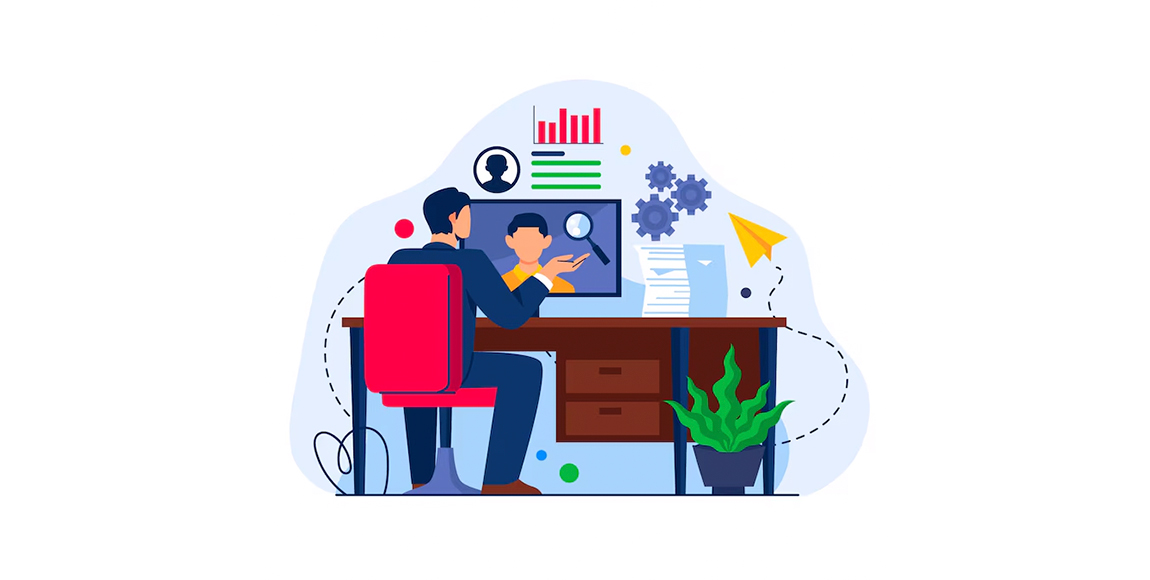
With the rapid rate of technological change comes the necessity of upskilling information technology employees — especially in a time when talent is in short supply. The continued disruption of the workplace caused by the pandemic has further added to the difficulty faced by IT managers.
Even though many firms had some number of remote workers before the pandemic, most have typically relied on in-person learning as a fundamental component of their learning and development programs. Due to the expectation that the hybrid workplace model, which combines remote and in-office work, would be around for the long haul, rethinking how upskilling may be accomplished continually in this paradigm has become critical.
Because employees were able to transition to remote working relatively quickly, businesses may be under the impression that technological and cultural issues have been resolved in large part by this point. However, there is a risk that businesses will believe that everything is smooth sailing from here on out. However, that frame of mind fails to recognize how, for many, the previous year has been a matter of “make do and repair.”
The transition from mostly office-based work to a more balanced mix of on- and off-site work is as much about a shift from people who use technology to people who are empowered by technology as it is about geographic shifts in the workplace. Companies, if they haven’t already done so, should start thinking about how they will adapt to this significant shift.
TAKING ON THE PROBLEM OF DATA SILOS
What is required will vary according to the firm, the industry in which they operate, and the job of the individual employee. While this is the case, there will be some recurring themes that will be based on the lessons learned in 2020 – the ability to communicate, collaborate, and create within teams that may or may not be physically present in the same room, as well as the ability to access and digest information to make informed decisions without the need for lengthy discussions, meetings, or ad hoc informal catch-ups.
All of this is predicated on the availability of data. Although having a mix of physical and digital workspaces would be beneficial, executives will need to make certain that information does not become isolated as a result. More precisely, they must provide access to trusted, sanitized, and managed data in real-time and in the appropriate context for their users. Decision-making, information sharing, and actioning data-driven outcomes that add value become a reality for a business if these conditions are met, regardless of where their teams are located.
A SIGNIFICANT DISCREPANCY
This is especially true given the fact that the entire workforce should feel confident in their ability to analyze, evaluate, and act on data. Why? It removes the value of this information from the hands of a small group of data scientists and business intelligence specialists and distributes it throughout the entire firm. Data literacy is a critical component of combining the promise of data with the enablement of distributed workforces – without it, worker productivity will be limited to the times when they have access to expert teams, or even when those teams are available to meet in person. And, perhaps most importantly, it will hurt the effectiveness and competitiveness of the company.
Furthermore, as data and analytics technologies continue to improve, personnel must also continue to upskill to keep up. Consequently, business leaders must ensure that data literacy training, which includes both in-person and online options, forms an integral component of their organization’s data strategy, with employees, encouraged to ask questions about turning data into insight. Only in this way will they be able to assure that no one is left behind.
GREETINGS TO THE NEW MIXED WORKFORCE
Our future style of working is likely to be a mix of companies retaining what they believe to be the greatest aspects of traditional office work while also incorporating the advantages of a more empowered employee base that can work from anywhere, they want. Leaders must continue to build on the digital foundations laid in 2020 if they are to achieve success in this endeavor. By removing data silos and training their staff in data literacy, they will be able to build a culture of data-driven decision-making within their workforce, which will be able to accommodate both physical and virtual teams in their organization. It’s time to say hello to (and get ready for) the hybrid workforce, which will be around for a long time.
Video conferencing, whether for personal or business purposes, has become vital, and thanks to Corona, purportedly “novel” methods such as contactless payment have made their way into our everyday life. This epidemic is also demonstrating its potential as a catalyst for innovation in the workplace, according to experts.
As of now, the workspaces demonstrate how technology advancements serve to make the hybrid world more sustainable while also making it more safe and flexible, as well as how they assist enterprises in meeting the rising needs for connectivity and security in modern office buildings.
CONCLUSION:
Highbar Technocrat is one of the leading end-to-end IT solution providers for the Infrastructure, EC&O, Real Estate, and Power sectors. They are SAP Gold partner and offer a wide bouquet of digitally integrated solutions ranging from implementing SAP-based ERP solutions like Rise with S/4HANA, Cloud-based solutions to 5D BIM for mega infra-projects, RPA & IoT solutions, and many more. With an in-depth understanding and core competence of the construction & infrastructure industry, Highbar is the perfect blend of domain knowledge in the infrastructure business with a team that is well equipped to understand and relate to the requirements of the sector.
To know more write us at enquiry@highbartech.com or call +91 89767 11399
